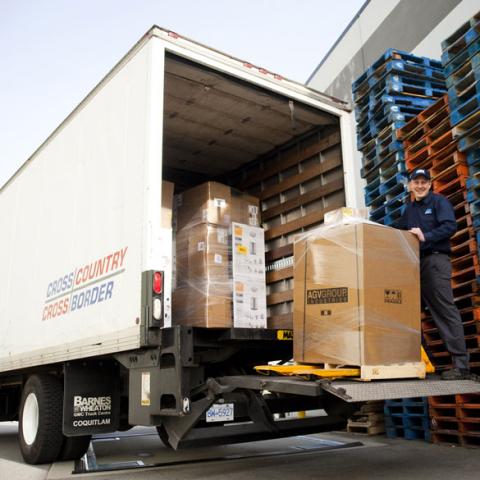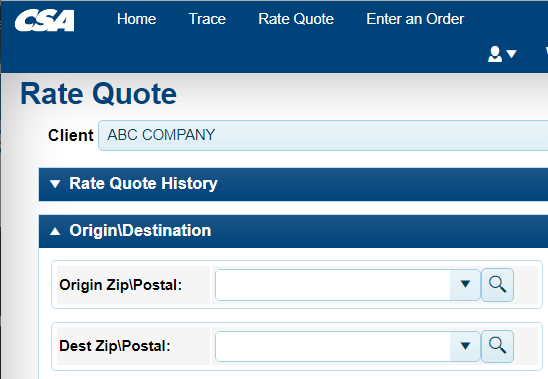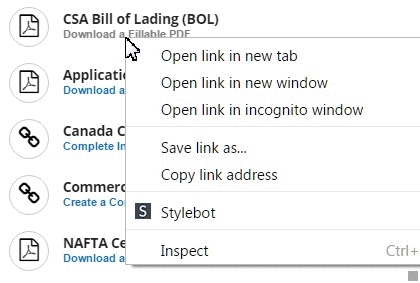Customs Clearance: A Complete Guide
Every cross border shipment of goods must clear customs before it can be imported or exported. However, navigating the customs clearance process requires some additional document preparation and familiarity with the rules and regulations in Canada and the USA.
Though the extra paperwork and official inspections may seem daunting, the customs process for shipping freight is less complicated than you may think—especially if you partner with a reputable shipping company and customs broker to avoid unexpected delays or fees.
Our complete guide on how to navigate import customs clearance can help you understand the process and complete your next international shipment with your peace of mind intact.
What is Customs Clearance?
Before taking a deep dive into the customs clearance steps and requirements, let’s answer the basic question: what does customs clearance mean?
Customs clearance is a process that involves the submission of documentation to the associated government custom agency and then the subsequent oversight and clearance of the goods in transit.
- The customs clearance documentation is assembled by the assigned customs broker to the shipper. It will prove that any taxes or duties have been paid. Then, the goods are released for import or export.
- The customs clearance process is the act of passing a shipment of goods through customs, the government agency responsible for overseeing the compliance of shipments with international trade laws. Customs officials oversee each incoming or outgoing shipment to make sure it is in line with the country’s regulations. It is then cleared for import or export. However, at any time a shipment can be inspected.
What is the Customs Clearance Process?
Though the custom clearance meaning is straightforward, the process itself involves several steps and can be overwhelming at first glance. So how long does customs clearance take for imported goods? Understanding the timeline of import customs clearance is essential for businesses engaged in international trade. Let’s break it down to understand exactly what happens when a shipment arrives at customs.
- Document inspection. A customs officer will review the paperwork for your shipment to signal an initiated customs clearance process. This can include a commercial invoice (CI) (stating the contact information for the shipper and receiver, export date, description of the cargo, and its value), a purchase order from a buyer, packing list, shipping bill, bill of lading (BOL) or air waybill, and certificate of origin (NAFTA or USMCA Certificates of Origin, for example). There may also be further documentation required by the buyer, financial institution or LC terms, or the importing country. Canada, for example, also requires a Canada Customs Invoice for incoming shipments.
- Tax and duty calculation. Based on goods being shipped, the customs broker will ensure that the appropriate taxes and duties are prepaid or collected for the type of goods in your shipment, their declared value, and the customs laws of the importing country. Customs officers are responsible for verifying and tracking whether these charges have already been paid.
- Payment of taxes and duties. If the taxes and duties applicable to your shipment have not already been paid, the customs officer will request payment.
- DDP (Delivered Duty Paid). If a shipment is marked as DDP, all taxes and duties have been prepaid, usually via your customs broker, who can calculate and process tax and duty payments in advance for a clearance fee.
- DDU (Delivered Duty Unpaid). Shipments marked as DDU are forwarded to an independent customs broker to collect the amount due from the recipient, as well as extra fees like inspection, storage, handling, insurance, and disbursement.
- Release of shipment. Once any outstanding taxes and duties are paid and the product has cleared import customs, the shipment is released by customs and can continue to its final destination. Some trucking companies have warehouses that allow a shipment to continue through the border to be held "in bond" at the warehouse until it is cleared. There is usually a charge associated with not having the correct paperwork available to properly clear a shipment. In other words, a carrier's "in bond" capabilities are beneficial but shouldn't be something that a shipper relies on every time a shipment crosses the border.
When is Import Customs Clearance Needed?
Customs clearance is required for all international shipments of commercial goods, but if you have the required paperwork and use a broker to help coordinate and help you calculate and pay the required taxes and duties, the process becomes relatively streamlined.
One of the easiest ways to simplify the import customs clearance process is by working with a customs broker who can process tax and duty payments in advance for a fixed custom clearance fee. CSA Transportation participates in the Customs Self Assessment (CSA) Program, for example, allowing us to clear CSA-eligible goods quickly at the Canadian border and speed up the entire customs process. When you choose importers that offer high-quality customs clearance services, you can focus on growing your business while leaving the nitty gritty of import customs clearance in experienced and capable hands.
Custom Broker Fees: Explained
Navigating complex international trade procedures can be challenging. However, with the expertise of a customs clearance agent, going through the system becomes significantly easier and offers added protection. When you hire a customs broker to facilitate your international shipment, you are paying for peace of mind.
What does that mean, exactly?
Brokers procure all the documents you need and assist in completing the paperwork so the custom clearance process proceeds smoothly. They help you navigate the alphabet soup of import and export codes and forms (including HTS codes and CF-28 or CF-29 forms), assist with valuation analysis and determining country of origin, and automate the process via electronic document and reporting systems like ACI, RLF, EDI, and ACE.
Customs brokers are also experts on trade agreements that offer beneficial duty and tax rates like the USMCA/ CUSMA (the new agreement replacing NAFTA for North American Trade) to help you take advantage of any opportunities these may offer, and what customs fees you can expect when shipping from Canada to U.S.
Though each customs broker usually specializes in servicing specific regions and may offer different rates, most calculate their fee based on the products, value, and point of origin. Fees generally include a customs clearance charge, inspection fees, and agency or bank transfer fees. When using a trucking company like CSA Transportation, the cross border delivery service will include coordination with your designated customs broker to help cut down on your work.
How to Avoid Clearance Delays
The key to avoiding delays in the clearance process is providing complete and accurate paperwork to the trucking company so that they may coordinate with your customs broker and ultimately submit your paperwork for clearance by government officials. Knowing how the import customs clearance requirements apply to you and staying up-to-date with the latest import regulations and relevant tariff laws is crucial for avoiding delays. Experienced shipping companies and brokers can assist in making sure your documents are thorough and include the correct business information, inventory, and value of cargo. Doing so will ensure the proper taxes and duties are applied and your shipment isn’t flagged by the authorities.
Is Customs Clearance the Solution for Your Business?
If you need to ship between the U.S. and Canada, you will need to deal with customs clearance. At CSA Transportation, we are cross-border shipping experts and our in-house customs facilitators can guide you through the customs clearing process. Though we do not provide brokerage services, we collaborate with your customs broker (or can recommend one) to move freight across the border quickly and easily. Contact us, and we’ll evaluate the best option for your shipping needs.









